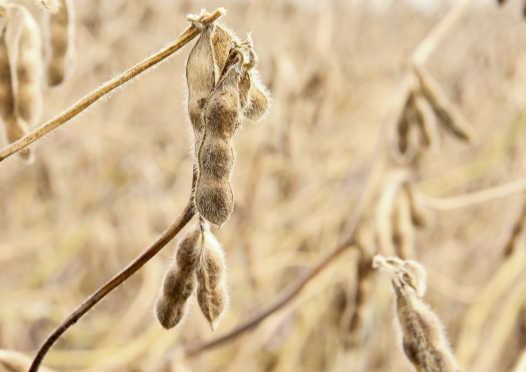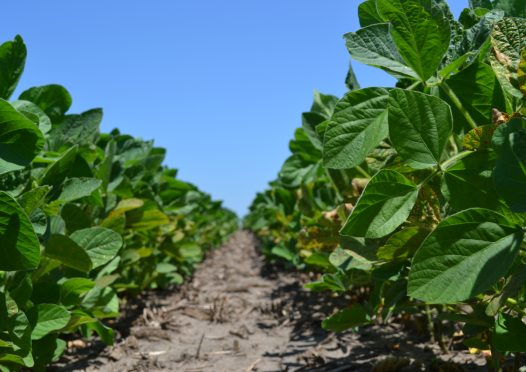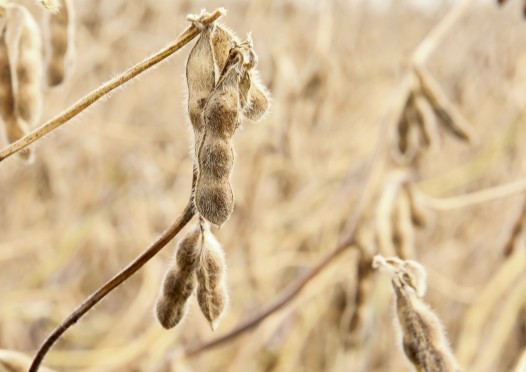ILSOYADVISOR POST
High yields part of solid 2016 crops
This article originally appeared on Illinois Farmer Today.
BLOOMINGTON, Ill. — While many Illinois farmers set personal-best records for corn and soybean yields in 2016, Robert Lakey and his son, Jason, officially had some of the best yields for both corn and soybeans across the state.
The father and son team placed second in Illinois in the National Corn Growers Association yield contest for non-irrigated corn with 310.93 bushels per acre, and they won the Illinois Soybean Association annual Yield Challenge with 106.29 bu./acre. They also won in 2015 with 108.30.
While the yield contests focus on two acres, allowing for intensive management, the Lakeys and other farmers saw some of their best yields ever on regular field crops as well. The Champaign County farmers averaged 85 bu./acre overall for soybeans.
They say that planting early, using fungicides and insecticides and seed treatments as well as good weather were all important parts of the mix to their success.
They usually start planting the second or third week in April.
“We start corn and soybeans at the same time. If we are planting soybeans on April 15, we are planting corn then too,” Lakey said.
It’s important to take care of disease, said Lakey, who manages fungicides and insecticides carefully and is a great believer in seed treatments. Variety choice is also high on the list.
He sees waterhemp as a continuing problem and will switch his bean variety to a Dicamba-tolerant option this year.
Like other farmers, he takes the lessons learned on the small plots into account in making decisions on his larger operation.
“You can do something on 20 acres that’s not economically feasible on 2,000 acres,” he said.
That said, it’s not always the plot that has the most treatments that wins the yield challenge. Sometimes it is the timeliness of rains.
While weather is always a factor in yields, Grant Strom, a Knox County District 4 soybean yield champion in Western Illinois in both 2015 and 2016, notes those two years both had high yields, but the weather was considerably different.
“It was dry in May and June, on the brink of drought until June 22 in 2016. Then it was wet until September,” he said. “The year before, crops were drowning in June and dry later. It was a flip flop of years, but both worked well.”
The soybean varieties that won in 2015 for them weren’t the same as the winners in 2016. But some varieties did well both years, he said.
“The last three years have been our best soybean years in a row,” the Dahinda farmer said. “All were records a little bit better each year.”
Soybean yields across the farming operation have been on the uptick, with an average of 69 bushels across the farm this year. Strom’s test plots have proven fungicide and insecticides pay off, but he is still uncertain about consistent benefits from microbial and foliar feeding. Some years it works and some years not.
“This year they were not as beneficial, but next year it could be the opposite,” he said.
Strom, who farms with his parents Doug and Marsha, said “planting early is a significant advantage.” Variety choice and population also have an effect, he said.
Strom variable plants soybeans at 130,000 to 170,000 population and is considering dropping that by 10,000 this year. His research has shown similar yields with fewer plants.
“It cuts expenses a little, but we will add some of that back into seed treatments,” he said.
Before final USDA yield numbers were released Jan. 12, he said he was pretty certain Knox County would have record yields for both corn and soybeans. His county’s average yield of corn was expected to be 215 bu./acre, and his farm did better than that, Strom said.
Rick Boyer, of New Holland, who farms with his brother, Mike, and their father, Earl, been a ISA soybean yield winner in his district for two years in a row with 91.5 bu./acre in 2015 and 93.5 in 2016.
“Personally we have seen our soybean yields go up steadily,” he said.
This year their soybeans averaged in the low 80s on 1,800 acres. His corn yields on 2,200 acres were good this year, but not as good as soybeans.
“We had better corn yields a few years ago,” he said.
As far as planting this year, he expects that his own farm and others in his area will be grow “a little more beans than normal.” Higher prices for soybeans and good yields are prompting the small shift from corn.
Before the final yield reports came out Jan. 12, the USDA had been projecting 2016 to be a record year for corn yields in Illinois, with an average of 202 bu./acre — up from the record of 200 in 2014. Rodney Weinzierl, executive director of the Illinois Corn Marketing Board and Illinois Corn Growers Association, said that surprised him because southeastern Illinois corn growers suffered this year with rain challenges.
Yields were definitely better north of Interstate 70. The high corn yields were “kind of scattered” throughout the state, he said. The resulting big crop is reflected in the carryover stocks and will continue to have an effect on prices in the coming season, Weinzierl said.
He sees continued opportunity for corn growers with the demand for ethanol, both locally in Chicago where some stations are adding new pumps and internationally with interest from Japan, South Korea, Taiwan and Mexico. He attributes that to the lower prices.
“That’s the positive side of low prices,” he said of the growing demand. “It makes us more competitive.”




Comments
Add new comment